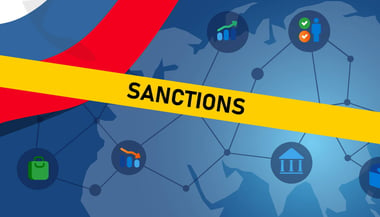Contents
- The Importance of Customer Screening in Risk Management
- Common Types of Fraud in Customer Transactions
- Best Practices for Implementing Customer Screening Processes
- Technology Solutions for Effective Customer Screening
- The Benefits of Using Customer Screening Software
- Balancing Security and Customer Experience in Screening Processes
- Real-World Examples of Customer Screening Success
- Continuous Monitoring and Updating of Customer Screening Protocols
- Future Trends in Customer Screening and Fraud Prevention
In today's business landscape, managing risks and preventing fraud have become critical for organizations across industries. One of the key strategies employed by businesses to mitigate these risks is customer screening. By implementing effective customer screening processes and utilizing technological solutions, organizations can ensure they are better equipped to identify potential risks, authenticate customers, and prevent fraudulent activities. This article will explore the importance of customer screening in risk management, common types of fraud in customer transactions, best practices for implementing customer screening processes, technology solutions for effective customer screening, the benefits of using customer screening software, strategies for balancing security and customer experience in screening processes, real-world examples of customer screening success, continuous monitoring and updating of customer screening protocols, and future trends in customer screening and fraud prevention.
The Importance of Customer Screening in Risk Management
Customer screening plays a crucial role in risk management for businesses of all sizes. By conducting thorough customer due diligence, organizations can identify potential risks associated with their customers, such as money laundering, terrorist financing, or involvement in other illicit activities. Effective customer screening enables organizations to assess the risk profile of their customers and make informed decisions when it comes to onboarding, providing access to sensitive information or products, or entering into financial transactions. By implementing robust customer screening processes, businesses can significantly reduce the likelihood of becoming unknowingly involved in fraudulent activities or regulatory non-compliance.
Furthermore, customer screening is not only essential for mitigating financial risks but also for safeguarding the reputation and integrity of a business. In today's interconnected world, news of any association with criminal activities or unethical behavior can spread rapidly, leading to severe damage to a company's brand and trust among its stakeholders. Therefore, by prioritizing customer screening as part of their risk management strategy, organizations demonstrate their commitment to upholding high ethical standards and maintaining a trustworthy relationship with their clients and partners.
Moreover, customer screening is a continuous process that should be integrated into the overall risk management framework of an organization. Regularly updating customer information and conducting ongoing monitoring can help businesses adapt to the evolving risk landscape and promptly identify any red flags that may arise over time. By staying vigilant and proactive in their customer screening efforts, companies can stay ahead of potential threats and ensure a more secure and compliant business environment for all parties involved.
Common Types of Fraud in Customer Transactions
Fraudulent activities pose significant risks to businesses, and understanding the common types of fraud in customer transactions is essential for effective risk management. One common type is identity theft, where fraudsters use stolen identities to commit fraud or gain access to sensitive information. Another prevalent fraud type is account takeover, where criminals gain unauthorized access to a customer's account and perform fraudulent transactions. Payment fraud, whether through stolen credit card details or fraudulent wire transfers, is also a major concern. Additionally, businesses need to be aware of the risks associated with money laundering, terrorist financing, and other forms of financial crimes.
Identity theft is a particularly insidious form of fraud that can have long-lasting repercussions for both individuals and businesses. Fraudsters often obtain personal information through various means, such as phishing scams or data breaches, and use this information to impersonate someone else. This can lead to financial losses, damage to credit scores, and even legal troubles for the victims. Businesses must implement robust identity verification processes to prevent such fraudulent activities and protect their customers' sensitive data.
Account takeover fraud is a growing concern in the digital age, where cybercriminals exploit weak passwords or security loopholes to gain access to online accounts. Once inside, fraudsters can make unauthorized transactions, change account details, and cause significant financial harm to both customers and businesses. It is crucial for companies to invest in multi-factor authentication methods and real-time monitoring systems to detect and prevent account takeover fraud before it escalates.
Best Practices for Implementing Customer Screening Processes
Implementing robust customer screening processes requires a systematic approach to minimize risks effectively. One best practice is to establish clear and well-defined customer screening policies and procedures. This includes determining the data and documentation required for customer due diligence, establishing risk-based screening thresholds, and defining the roles and responsibilities of the personnel involved in the screening process. Regular training and awareness programs for employees are also essential to ensure they understand the importance of customer screening and adhere to the established protocols. It is important to periodically review and update the screening processes to align with the evolving risks and regulatory requirements.
Another crucial aspect of implementing customer screening processes is the utilization of advanced technology and tools. Many organizations are now leveraging artificial intelligence and machine learning algorithms to enhance the efficiency and accuracy of their screening processes. These technologies can help in automating the screening of large volumes of customer data, flagging potential risks or red flags for further investigation. By incorporating cutting-edge technology into their screening procedures, companies can stay ahead of emerging threats and ensure compliance with regulatory standards.
Furthermore, fostering a culture of compliance within the organization is paramount for the success of customer screening processes. This involves promoting a strong ethical framework and zero-tolerance policy towards financial crimes such as money laundering and terrorist financing. By instilling a culture of integrity and accountability, employees are more likely to actively participate in the screening efforts and report any suspicious activities promptly. Regular communication and feedback mechanisms should be in place to encourage continuous improvement and transparency in the customer screening processes.
Technology Solutions for Effective Customer Screening
Advancements in technology have revolutionized customer screening processes, enabling organizations to enhance their risk management capabilities. One technology solution is the use of artificial intelligence and machine learning algorithms to analyze vast amounts of customer data and identify potential risks or anomalies. These technologies can quickly flag suspicious activities and help organizations take appropriate actions. Automated screening tools can also streamline the customer screening process by reducing manual effort and improving accuracy. By leveraging technology solutions, businesses can enhance their ability to detect potential risks and prevent fraudulent activities before they occur.
Another innovative technology solution that is gaining traction in the realm of customer screening is biometric authentication. Biometric data, such as fingerprints or facial recognition, can be used to verify the identity of customers more securely and efficiently. This advanced form of authentication adds an extra layer of security to the screening process, making it harder for fraudsters to impersonate legitimate customers. By incorporating biometric authentication into their screening procedures, organizations can significantly reduce the risk of identity theft and unauthorized access.
Furthermore, blockchain technology is also being explored as a potential solution for customer screening. The decentralized and immutable nature of blockchain can provide a secure and transparent way to verify customer identities and track their transaction history. By utilizing blockchain for customer screening, organizations can create a tamper-proof record of customer interactions, enhancing trust and security in their operations. This technology has the potential to revolutionize the way customer screening is conducted, offering a more efficient and reliable method for risk management in the digital age.
The Benefits of Using Customer Screening Software
Customer screening software offers several advantages over manual screening processes. First and foremost, it significantly reduces the time and effort required to screen customers, allowing businesses to onboard new customers quickly and efficiently. Moreover, automated screening software can analyze data from multiple sources simultaneously, providing more comprehensive risk assessments. The software can also generate real-time alerts for suspicious activities, enabling businesses to take immediate action. Additionally, customer screening software provides an auditable trail of screening activities, ensuring compliance with regulatory requirements and facilitating internal and external audits.
Furthermore, customer screening software often comes equipped with customizable settings, allowing businesses to tailor the screening criteria to their specific needs. This flexibility ensures that businesses can adapt the software to evolving compliance regulations and changing risk profiles. By customizing the screening parameters, businesses can enhance the accuracy and effectiveness of their screening processes, reducing the likelihood of false positives and minimizing the risk of overlooking potential red flags.
Another key benefit of customer screening software is its scalability. As businesses grow and customer volumes increase, manual screening processes may become overwhelmed and prone to errors. In contrast, automated screening software can handle large volumes of customer data efficiently, maintaining consistent screening standards regardless of the scale of operations. This scalability not only improves operational efficiency but also enhances the overall effectiveness of customer screening, ensuring that businesses can effectively manage risk exposure and protect their reputation.
Balancing Security and Customer Experience in Screening Processes
While robust customer screening processes are essential for risk management, organizations must also consider the impact on customer experience. Lengthy or intrusive screening processes can lead to customer frustration and potential loss of business. It is crucial to strike the right balance between security and customer experience. This can be achieved by leveraging technology solutions that streamline the screening process, minimizing the need for manual intervention. Offering self-service options, such as online verification or mobile-based identity verification, can also enhance the customer experience while ensuring security. Regularly soliciting customer feedback and addressing any concerns or pain points can further help organizations strike the right balance.
Moreover, in today's digital age, the rise of cyber threats adds an additional layer of complexity to the security aspect of screening processes. Organizations need to stay vigilant and continuously update their security measures to protect sensitive customer data from potential breaches. Implementing multi-factor authentication, encryption protocols, and regular security audits are crucial steps in safeguarding customer information.
Additionally, when designing screening processes, organizations should prioritize transparency and communication with customers. Clearly outlining the reasons behind specific screening requirements and how they contribute to overall security can help build trust and understanding. Providing educational resources on cybersecurity best practices can empower customers to play an active role in protecting their own data, fostering a sense of partnership between the organization and its clientele.
Real-World Examples of Customer Screening Success
Many organizations have experienced tangible benefits from implementing effective customer screening processes. For example, a leading financial institution successfully prevented significant losses by leveraging advanced fraud detection algorithms that identified suspicious account activities in real-time. By promptly freezing the flagged accounts and conducting further investigations, the institution prevented fraudulent transactions and safeguarded customer funds. Similarly, a multinational e-commerce company implemented robust customer screening processes to mitigate risks associated with online transactions. By analyzing customer data and employing artificial intelligence algorithms, the company was able to identify and block fraudulent accounts before any financial loss occurred.
Continuous Monitoring and Updating of Customer Screening Protocols
As risks and fraud techniques evolve, it is essential for organizations to continuously monitor and update their customer screening protocols. Regularly assessing the effectiveness of the screening processes and making necessary adjustments is crucial to stay ahead of emerging risks. This includes staying updated with the latest fraud trends, regulatory requirements, and technological advancements in customer screening. Organizations should establish a dedicated team tasked with monitoring and reviewing customer screening activities, ensuring the protocols remain effective and aligned with the changing risk landscape. By maintaining proactive vigilance, organizations can effectively mitigate risks and prevent fraudulent activities.
Future Trends in Customer Screening and Fraud Prevention
The field of customer screening and fraud prevention is continually evolving, and there are several trends that organizations should be mindful of. One emerging trend is the use of advanced biometric authentication methods, such as facial recognition or fingerprint scanning, for customer verification. These technologies offer enhanced security and convenience for customers. Another trend is the integration of artificial intelligence and machine learning algorithms into customer screening software, enabling more accurate risk assessments and proactive fraud prevention. Additionally, organizations are increasingly adopting a collaborative approach by sharing customer screening data and best practices with industry peers to collectively combat fraud and mitigate risks.
In conclusion, customer screening is a critical component of risk management and fraud prevention for businesses today. By implementing robust customer screening processes and leveraging technology solutions, organizations can minimize risks, prevent fraudulent activities, and ensure compliance with regulatory requirements. The continuous monitoring and updating of customer screening protocols, along with a focus on enhancing customer experience, are essential for long-term success. As technology advances and new trends emerge, organizations must adapt their customer screening strategies to stay ahead of evolving risks and effectively mitigate fraud.
As the landscape of customer screening and fraud prevention continues to evolve, staying ahead of the curve is paramount for your organization's security and compliance. Tookitaki's FinCense is at the forefront of this evolution, offering an end-to-end operating system designed to empower fintechs and traditional banks with cutting-edge anti-money laundering and fraud prevention tools. With Tookitaki's FinCense, you can accelerate customer onboarding, maintain real-time compliance, and enhance your FRAML management processes with our bundled suite of financial crime tools. Embrace the future of customer risk scoring, smart screening, and alert management to build an effective compliance program that doesn't compromise on operational efficiency. Don't let fraud and regulatory risks hold your business back. Talk to our experts today and step into a new era of customer screening and fraud prevention with Tookitaki's FinCense.
Compliance Processes with Tookitaki?




